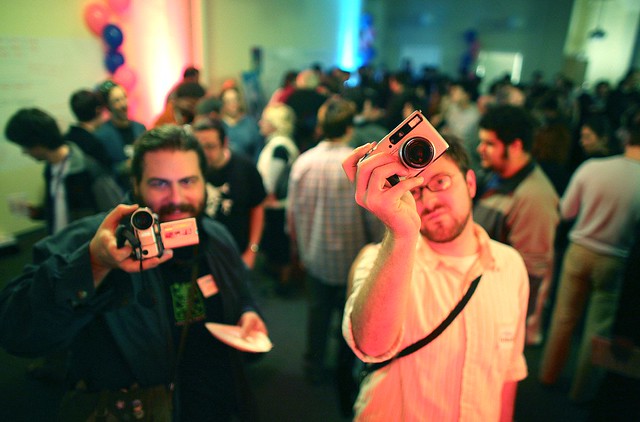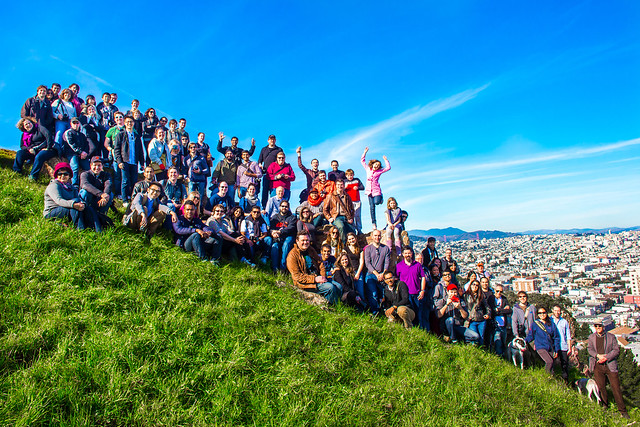All photographers find themselves suffering from Gear Acquisition Syndrome (or GAS, if you don’t mind) at one time or another. Whether you are eager to try something new or just stuck in a creative rut, falling into the trap of thinking that buying a new lens will instantly revamp your photography skills is something we have all been guilty of doing.
You can spend hours daydreaming of the amazing shots you would be taking if only you could afford that lovely lens you have your eye on. But what if you just can’t justify the purchase? If, like most of us, you don’t have inexhaustible funds, here are eight easy tips to keep your GAS (Gear Acquisition Syndrome) at bay.

#1 – Keep your kit lens
One of the first things many photographers do after they’ve learned how to use their DSLR is to upgrade their kit lens. Kit lenses are lightweight, versatile, and can achieve most of the results you desire, despite their limitations. They are incredibly handy to keep around. As you start expanding your lens collection, you may suddenly find that there is a type of photography you want to explore that your current lenses aren’t very good for. Your kit lens can almost certainly help you.
Typically ranging from 17-55mm, kit lenses offer a good wide-angle combined with a short telephoto capability (especially when used on an APS-C sensor camera). This means that they can shoot the gamut from landscape to portraiture easily. When you suddenly find yourself dreaming of that incredibly pricey wide-angle and wishing it was yours, having your kit lens on hand is a way of finding out if you actually want or need a wide-angle lens before you hand over your hard-earned money.

Shot using a kit lens.
#2 – Change your environment, not your gear
The easiest way to shake up the way you shoot with the equipment you already have is to change what you are shooting. Hop in your car and go on a road trip. Visit the sea. Climb a hill and take in the view. Go to a new neighborhood and explore.
Of course, it doesn’t all have to be about travel. If you always shoot landscapes or take some time out to see how your skills translate to portraiture. If you love still life photos, go to your local hardware store and buy a few wooden planks and marble tiles to use as backdrops in your images.
It’s easy to get bored, but shaking up your surroundings and seeking out new subjects is an instant form of inspiration.

A new place opens your eyes.
#3 – Set your alarm clock
It’s a piece of advice given to photographers so often that it is almost a cliché, but there’s no denying that it’s true. Setting your alarm clock to wake up early and take advantage of the golden hour light is the easiest way to improve your photography without spending a penny.
The quality of light found at sunrise – that crisp, misty, lemony light – and sunset – that rich red and gold glow – completely transforms any scene. Buying a different lens isn’t going to change your world unless you have very specific needs for it, but having a limitless spectrum of shifting light to play with certainly will.

Light can make even the most mundane subject seem magical.
#4 – Join an on-going photography challenge
Whether it’s a 365 photo-a-day challenge or a 30-day photo sprint, whether it’s a once-a-week challenge or just something you dip into now and again like a photography tutorial book, starting a challenge can refresh your eye for photography. On-going challenges can also help you to avoid blank spots in your creativity and build up a body of work over time. As well as helping you get rid of any creative blocks, these challenges can introduce you to new techniques and ideas.
Sometimes changing the way you shoot is far easier than changing what you are shooting with. Why not try HDR? How about trying a new post-production technique? Or maybe try creating a photo series where you can only use a symmetrical perspective. These challenges help you try lots of new things without needing to buy any new gear.

New perspectives can shake up your photography.
#5 – Limit yourself
They say that the best camera is the one you have with you. Sometimes we get so fixated on gear we think we need, that we forget that the photographer is the main component in making a great picture. Digital Rev’s Cheap Camera Challenge has proven time and again that great photography starts with the creative eye behind the camera and not the actual camera they are using.
Instead of investing in a new piece of gear, put your gear on the shelf and limit yourself for a while to the camera on your phone. It might sound like madness, but limitation can be the mother of creativity. Working with a more basic tool forces you to focus on the fundamentals of the form – composition, color, texture, symmetry, subject, style, and more. This minimalist approach will hone your eye, and when you finally go back to using your gear, it will be like dipping into a treasure trove of possibilities.

Shot with an iPhone.
#6 – Macro without a macro lens
There are some types of photography you may think are impossible without first investing in specialist equipment. Macro photography is one of those genres. Without a dedicated macro lens, how can you possibly achieve close enough focus? But there are a few ways to try shooting macro before you buy.
Firstly, free lensing is the technique of shooting with your lens unattached to your camera’s lens mount. By holding the lens freely and moving it backward and forward in front of the sensor, you can achieve a dreamy, light-leaked aesthetic. But this freedom of movement also changes the lens’s ability to focus at far closer distances. This is an easy and completely free way to test out shooting macro. The downside, however, is that it’s hard to control the light leaks and almost impossible to shoot steadily.

Shot using a Canon extension tube.
To resolve this you can try extension tubes. These cheap tubes mimic the effect of free lensing, but minimize light leaks and shake. If you have a little more to spend, you can buy AF-equipped versions. These cheap solutions can let you try shooting macro without putting quite the dent in your bank balance that a dedicated macro lens would.
#7 – Collaborate with models
If you find yourself stuck in a creative rut and you’re fixated on a new piece of gear in the hopes of shaking yourself out of it, why not try working with new subjects instead?
Platforms like Model Mayhem or Purple Port can help you to connect and collaborate with models. By finding subjects who also bring their own ideas to the table, you can test out new techniques and styles. Don’t forget that working with models can mean more than just portraiture. Food photographers sometimes need models to be the hands in their images and lifestyle photographers may need someone building the campfire in a landscape scene. Let your imagination run wild.
 A model interacting with a scene tells a story.
A model interacting with a scene tells a story.
#8 – Shop for bargains
If all else fails and you succumb to GAS, try and find some cheap alternatives before you splash the cash. By shopping around on platforms like eBay and Etsy, you can stumble across some great vintage lenses for reasonable prices. As long as you have an adapter for your lens mount, these manual lenses offer fantastic optics at less than a quarter of the price of a modern alternative.
You can also find secondhand cameras, lenses, tripods, and lighting gear from reputable sellers like Wex Photographic and the London Camera Exchange (in the UK) or B&H Photo Video and Adorama (in the USA). These sellers test the equipment they sell to ensure it is in working order and sometimes offer warranties, giving you peace of mind and shaving potentially hundreds off your purchase.

Get out and shoot. (Shot with an iPhone.)
Conclusion
There will always be a time when you need a new tripod, lens, flashgun – or whatever it may be – in order to bring your creative vision to life. But I’d argue that nine times out of ten you don’t actually need more gear – you need more ingenuity.
So when you feel like you are succumbing to GAS and are hasty to spend money, just remember that a great photograph starts and ends with a great photographer. You don’t give credit for the exquisite work of a master carpenter to the chisel he chose to use, so you certainly shouldn’t give so much credit to your gear! Instead, focus on your ingenuity in using what you already own.
The post Eight Ways to Get Rid of GAS – Gear Acquisition Syndrome by Laura Hexton appeared first on Digital Photography School.

Digital Photography School













 A model interacting with a scene tells a story.
A model interacting with a scene tells a story.
